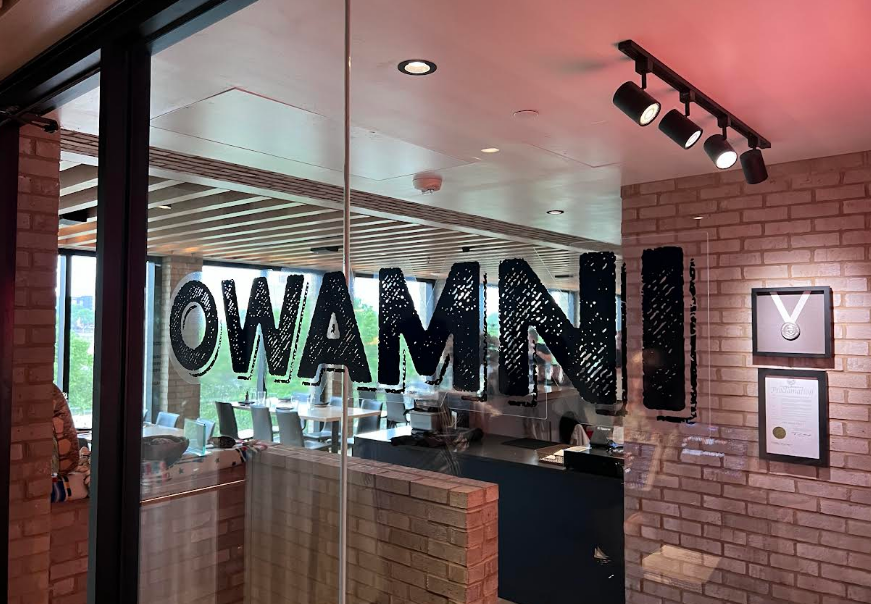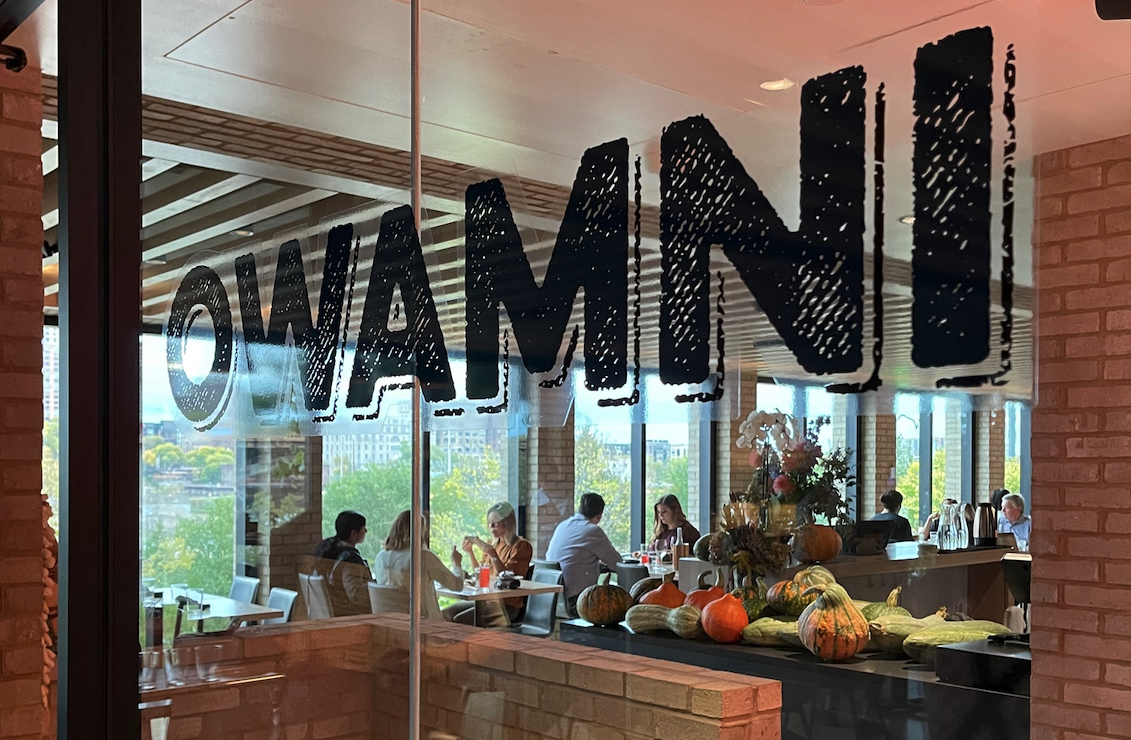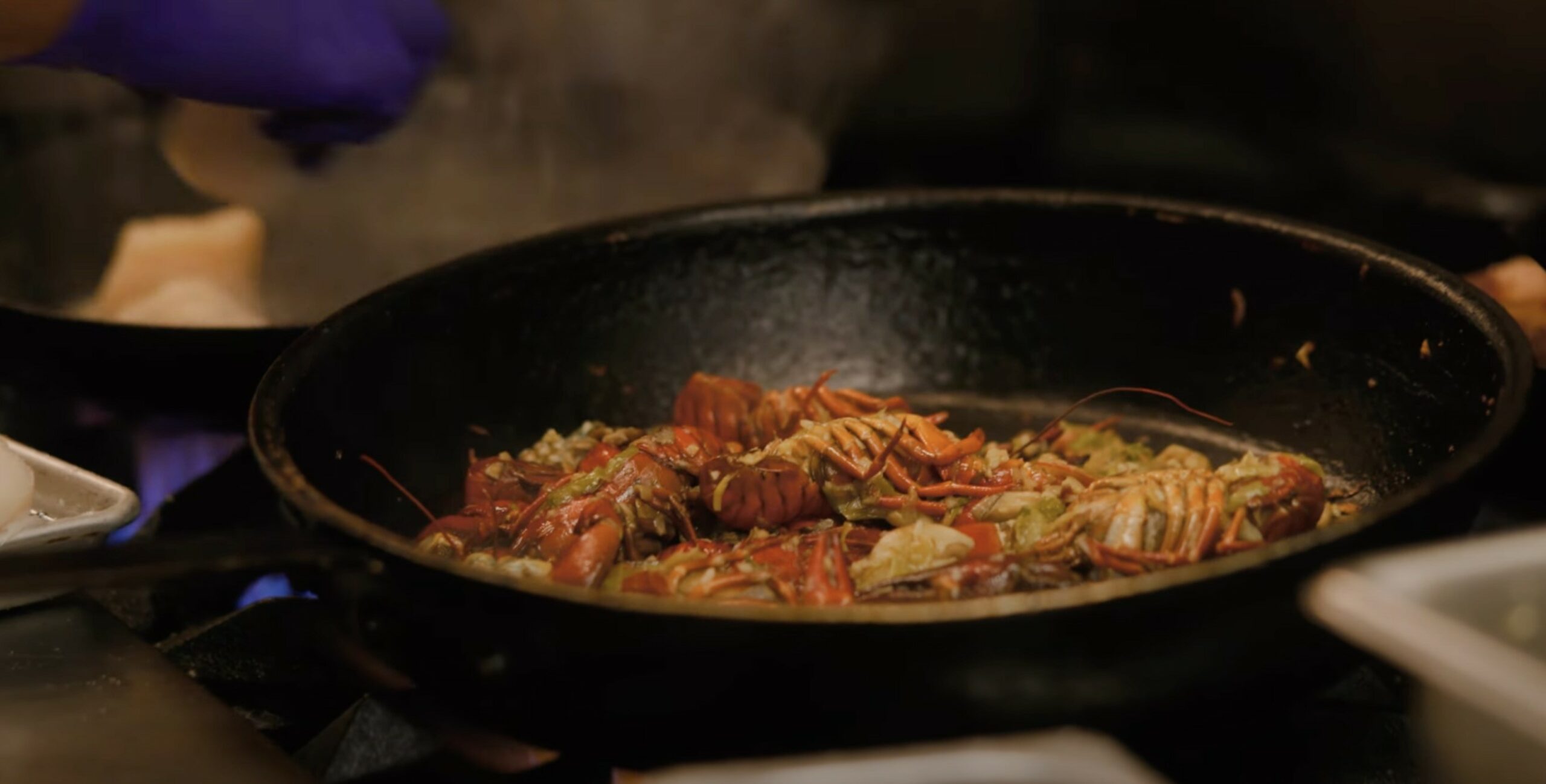Owamni Restaurant
Owamni, located in Minneapolis, Minnesota, is more than just a restaurant; it’s a powerful statement about reclaiming Indigenous culinary traditions and fostering sustainable practices. This innovative establishment offers a unique dining experience deeply rooted in the land and culture of the Dakota people, showcasing a vibrant and often overlooked aspect of American gastronomy. The restaurant’s success demonstrates the growing demand for authentic, ethically sourced food and the potential for Indigenous-led businesses to thrive.
Owamni’s Culinary Philosophy and Indigenous Ingredients
Owamni’s culinary philosophy centers on highlighting the bounty of Indigenous ingredients and traditional cooking techniques. Chef Sean Sherman, a renowned Oglala Lakota chef, leads the kitchen, meticulously sourcing ingredients from local Indigenous farmers and foragers. The menu showcases the diversity and richness of native plants, grains, and meats, often featuring ingredients unfamiliar to many diners, such as wild rice, three sisters (corn, beans, squash), and bison. The dishes aren’t simply reinterpretations of traditional recipes; they are a celebration of the flavors and textures of the land, reflecting a deep connection to the past while innovating for the present. The restaurant’s commitment to sourcing ingredients sustainably ensures the preservation of biodiversity and the long-term health of the ecosystem.
Owamni’s Mission and Values
Owamni’s mission extends beyond providing delicious food. The restaurant is deeply committed to sustainability, employing eco-friendly practices throughout its operations. This includes minimizing waste, sourcing ingredients responsibly, and using sustainable packaging. Furthermore, Owamni actively engages with the community, partnering with Indigenous organizations and supporting local farmers. The restaurant serves as a platform to educate diners about Indigenous foodways and promote cultural understanding, fostering a sense of community and shared responsibility for the environment. This holistic approach to business demonstrates a commitment to social and environmental impact, exceeding the expectations of a typical restaurant.
Owamni’s Location and Environmental Relationship
Owamni’s location within the Mill City District of Minneapolis is significant. The restaurant’s proximity to the Mississippi River and its historical context within a revitalized industrial area reflects a narrative of regeneration and cultural reclamation. The choice of location underscores the restaurant’s commitment to connecting diners with the natural environment and the rich history of the land. The restaurant’s design and atmosphere further emphasize this connection, creating a space that feels both modern and respectful of Indigenous traditions.
Owamni’s Unique Selling Proposition
Owamni offers a truly unique dining experience. It’s not just a place to eat; it’s a place to learn, to connect with Indigenous culture, and to experience the vibrant flavors of a sustainable and ethically sourced cuisine. The restaurant’s commitment to authenticity, sustainability, and community engagement sets it apart, offering a compelling narrative that resonates with diners seeking meaningful and memorable culinary experiences. The combination of exceptional food, a strong ethical foundation, and a powerful cultural message creates a compelling and profitable business model.
Menu and Dishes: Owamni Restaurant

Owamni’s menu is a testament to its commitment to showcasing Indigenous ingredients and culinary traditions. The restaurant’s approach is both innovative and deeply respectful of its heritage, resulting in a dining experience that is both unique and memorable. The dishes are carefully crafted to highlight the natural flavors of the ingredients, minimizing interference and maximizing the impact of each carefully selected element.
Owamni restaurant – Owamni’s dedication to sourcing local, seasonal produce is paramount. This ensures not only the freshest ingredients but also a dynamic menu that evolves with the changing seasons, reflecting the natural rhythm of the land and the bounty it provides. This dedication to seasonality distinguishes Owamni from many other high-end establishments, which often prioritize a static menu regardless of ingredient availability.
Three Signature Dishes
Three dishes exemplify Owamni’s commitment to culinary excellence and Indigenous ingredients. These are not merely dishes; they are stories told through flavor and texture, a reflection of a rich cultural heritage.
First, consider the Wild Rice Risotto. This isn’t your typical risotto; instead of Arborio rice, it utilizes wild rice, a staple of Indigenous cuisine, cooked to a creamy perfection. The wild rice’s nutty flavor is enhanced by the addition of foraged mushrooms, subtly earthy and adding depth to the dish. A touch of roasted squash adds sweetness and vibrant color, creating a visually appealing and intensely flavorful experience. The dish is finished with a sprinkle of crispy fried onions, adding a satisfying textural contrast. This dish represents a masterful blending of traditional techniques with Indigenous ingredients, resulting in a truly unique culinary experience.
Next, we have the Roasted Maple-Glazed Duck Breast. The duck, sourced locally and ethically, is expertly roasted to achieve a crisp skin and tender, juicy meat. The maple glaze, made with pure maple syrup from a local farm, adds a touch of sweetness that balances perfectly with the richness of the duck. The dish is served with a side of wild berries and a delicate parsnip puree, providing a beautiful contrast in color and texture. The combination of sweet and savory, rich and light, exemplifies the sophistication of Owamni’s culinary vision.
Finally, the Braised Bison Short Ribs represent a hearty and flavorful centerpiece. The bison, sustainably sourced, is braised for hours until incredibly tender, falling off the bone. The braising liquid, infused with herbs and spices, creates a rich and deeply flavorful sauce that coats the meat. This dish is served with a side of roasted root vegetables and a vibrant herb salad, providing a balance of textures and flavors. The bison short ribs highlight the power and simplicity of well-sourced, carefully prepared ingredients.
Menu Comparison with Other High-End Restaurants
Compared to other high-end restaurants in the same city, Owamni distinguishes itself through its unwavering commitment to Indigenous ingredients and culinary traditions. While many high-end establishments focus on imported ingredients and classic European techniques, Owamni champions a unique and sustainable approach, utilizing locally sourced, seasonal ingredients that reflect the region’s biodiversity. This focus on sustainability and cultural authenticity sets Owamni apart, creating a dining experience that is both innovative and deeply rooted in its community’s heritage. Many other high-end restaurants might offer locally sourced items, but few, if any, center their entire culinary philosophy around the specific ingredients and techniques of a particular Indigenous culture.
Seasonal Menu Changes
Owamni’s menu changes seasonally to reflect the availability of fresh, local ingredients. This dynamic approach ensures that the dishes are always at their peak flavor and quality. The spring menu might feature vibrant greens and lighter dishes, while the fall menu showcases the bounty of autumn harvests, including root vegetables and hearty stews. The reasoning behind this seasonal approach is simple: to provide the most authentic and delicious dining experience possible by working with nature’s rhythm and using ingredients at their peak flavor. This contrasts sharply with many restaurants that maintain static menus year-round, often compromising on freshness and flavor in order to maintain consistency.
| Dish Name | Description | Ingredients | Price |
|---|---|---|---|
| Wild Rice Risotto | Creamy wild rice risotto with foraged mushrooms, roasted squash, and crispy fried onions. | Wild rice, foraged mushrooms, roasted squash, onions, vegetable broth | $38 |
| Roasted Maple-Glazed Duck Breast | Locally sourced duck breast roasted to perfection with a maple glaze, served with wild berries and parsnip puree. | Duck breast, maple syrup, wild berries, parsnips | $45 |
| Braised Bison Short Ribs | Sustainably sourced bison short ribs braised until tender, served with roasted root vegetables and herb salad. | Bison short ribs, root vegetables, herbs | $52 |
Customer Experience and Atmosphere

Owamni’s success isn’t solely defined by its innovative menu; it’s deeply intertwined with the immersive dining experience it cultivates. The restaurant’s design and service work in perfect harmony to create an environment that’s both sophisticated and welcoming, leaving a lasting impression on every guest. This holistic approach to hospitality ensures Owamni stands out in a competitive market.
The ambiance at Owamni is best described as modern and rustic, a careful blend of sleek design elements and natural textures. Imagine warm, earthy tones accented by carefully chosen lighting that creates a sense of intimacy without feeling dim. The overall effect is one of refined simplicity, allowing the focus to remain squarely on the food and the conversation. Think exposed brick walls subtly contrasted with polished wood tables, creating a visual rhythm that’s both pleasing and unpretentious. The lighting is thoughtfully layered, with ambient lighting providing a comfortable glow and task lighting illuminating the tables for optimal visibility of the beautifully presented dishes.
Restaurant Design and Decor
Owamni’s design is a testament to its commitment to sustainability and its connection to the land. Natural materials are prevalent, from the wood used in the furniture to the locally sourced artwork adorning the walls. The space feels both contemporary and grounded, reflecting the restaurant’s philosophy of honoring indigenous ingredients and culinary traditions. The use of natural light, maximized through large windows, further enhances the feeling of openness and connection to the outside world. The carefully chosen color palette, consisting primarily of muted earth tones, creates a calming and sophisticated atmosphere, enhancing the overall dining experience.
Positive Customer Experiences
One frequent positive comment centers around the staff’s genuine enthusiasm for the food and its origins. Guests often report feeling a sense of connection to the land and the culture through the staff’s engaging stories and explanations of the dishes. Many describe the experience as more than just a meal; it’s an educational and cultural journey. For instance, a recent review mentioned how a server passionately described the process of foraging for a particular ingredient, enriching the guest’s understanding and appreciation of the dish. This personalized attention and knowledgeable service contribute significantly to the overall positive experience.
Customer Testimonial
“Owamni wasn’t just a meal; it was an experience. From the moment we walked in, the atmosphere was inviting and calming. The staff’s passion for the food and its story was infectious. Every dish was a revelation, showcasing the incredible flavors and textures of indigenous ingredients. It was a truly memorable evening that celebrated both exceptional food and cultural appreciation.” – Sarah J., Minneapolis.
Service Style and its Impact
Owamni’s service style is characterized by attentive but unobtrusive service. The staff is highly knowledgeable about the menu, readily explaining the origins and preparation methods of each dish. This level of service transcends simple order-taking; it fosters a genuine connection between the staff and the guests, enhancing the overall dining experience. The staff’s ability to answer questions with both expertise and enthusiasm further contributes to the positive customer perception. The balance between attentiveness and allowing guests to enjoy their meal at their own pace is carefully maintained, resulting in a seamless and enjoyable dining experience.
Impact and Influence
Owamni’s impact extends far beyond its delicious food; it represents a significant shift in the culinary landscape, championing Indigenous foodways and fostering sustainable practices. Its influence ripples through the local community, the wider restaurant industry, and the conversation around food sovereignty. The restaurant’s success is a testament to the power of authentic storytelling and a commitment to cultural preservation.
Owamni’s contributions to the culinary world are multifaceted. It’s not just a restaurant; it’s a powerful platform showcasing the rich biodiversity and culinary traditions of Indigenous communities. By highlighting forgotten ingredients and traditional cooking techniques, Owamni is actively reclaiming and revitalizing Indigenous foodways, countering centuries of marginalization and erasure. This revitalization goes beyond simply serving food; it involves educating diners and fostering a deeper understanding and appreciation of Indigenous cultures.
Owamni’s Community Impact and Economic Contributions
Owamni’s economic impact on the local community is substantial. The restaurant creates jobs, supporting local farmers and producers who supply its unique ingredients. This economic ripple effect strengthens the local food system and provides opportunities for Indigenous-owned businesses. Furthermore, Owamni’s success has elevated the profile of the Indigenous community, attracting tourism and generating positive media attention. This increased visibility can translate into broader economic benefits and greater support for Indigenous-led initiatives. The restaurant also actively partners with local organizations, contributing to community development and social initiatives.
Owamni’s Influence on Sustainable Practices and Indigenous Ingredient Sourcing
Owamni serves as a powerful example of sustainable restaurant practices. Its commitment to sourcing ingredients locally and ethically has inspired other restaurants to adopt similar approaches. The restaurant’s focus on utilizing wild rice, foraged mushrooms, and other Indigenous ingredients has broadened the culinary landscape, encouraging other chefs to explore and incorporate these unique elements into their menus. This influence demonstrates a growing awareness and appreciation for the importance of sourcing ingredients responsibly and sustainably. The restaurant’s success serves as a compelling case study for the financial viability of such practices, encouraging others to prioritize ethical and environmental considerations.
Awards and Recognitions
Owamni has garnered significant recognition for its innovative approach to dining and its commitment to Indigenous foodways. While a comprehensive list requires constant updating due to ongoing accolades, some notable examples include:
- James Beard Award nominations (specific categories and years should be added here based on verifiable sources).
- Inclusion in various “Best Of” lists by reputable publications (specific publications and years should be added here based on verifiable sources).
- Positive media coverage highlighting its impact and influence (specific publications and dates should be added here based on verifiable sources).
Visual Representation

Owamni’s visual identity is crucial to its success. Photography plays a vital role in conveying the restaurant’s unique ethos, from its stunning interior design to the artistry of its signature dishes and the serene beauty of its outdoor space. High-quality visuals are essential for attracting customers, building brand recognition, and ultimately driving revenue.
A photograph of the restaurant’s interior would showcase a space defined by natural materials and a minimalist aesthetic. Warm, earthy tones would dominate, with the use of reclaimed wood, exposed brick, and perhaps woven textiles creating a sense of rustic elegance. Large windows, if present, would flood the space with natural light, highlighting the carefully curated décor. The overall effect would be one of understated sophistication, reflecting the restaurant’s commitment to sustainability and its connection to the land. Subtle lighting would create a warm and inviting atmosphere, perfect for an intimate dining experience. The seating arrangements would be thoughtfully designed, perhaps featuring a mix of communal tables and more private booths, fostering both a sense of community and individual comfort. Details like locally sourced artwork or handcrafted pottery would add unique character and reinforce the restaurant’s focus on regional ingredients and artistry.
Interior Photograph Details, Owamni restaurant
The image would depict a carefully composed scene, possibly focusing on a specific area within the restaurant that showcases its design elements most effectively. The color palette would be muted and natural, with perhaps pops of color from fresh flowers or vibrant food presentations. The textures would be varied and tactile, from the rough texture of the wood to the smoothness of the ceramic tableware. The overall composition would be balanced and visually appealing, drawing the viewer’s eye to the key design features while maintaining a sense of calm and tranquility. The lighting would be natural and soft, avoiding harsh shadows and highlighting the natural beauty of the materials. The overall mood conveyed would be one of sophisticated rusticity and understated elegance.
Signature Dish Photograph Details
A photograph of Owamni’s signature dish would be a study in textures and colors. Let’s imagine, for example, a beautifully plated dish featuring wild rice, foraged mushrooms, and locally sourced vegetables. The wild rice would have a deep, rich brown hue, contrasting with the earthy tones of the mushrooms and the vibrant greens and yellows of the vegetables. The textures would be equally diverse, from the delicate crunch of the vegetables to the satisfying chewiness of the wild rice and the earthy, almost meaty texture of the mushrooms. The plating would be simple yet elegant, perhaps using natural materials like wood or stone to further enhance the connection to nature. The careful arrangement of the ingredients would highlight their individual beauty and the overall harmony of the dish. The photograph would be meticulously lit, emphasizing the depth and complexity of the colors and textures.
Outdoor Space Photograph Details (If Applicable)
If Owamni boasts an outdoor space, a photograph would highlight its seamless integration with the surrounding natural environment. The image would likely feature lush greenery, perhaps with wildflowers or native plants, creating a sense of calm and tranquility. Natural materials like wood or stone would be incorporated into the outdoor seating or landscaping, further reinforcing the restaurant’s commitment to sustainability. The overall effect would be one of harmonious coexistence between the built environment and the natural world. The lighting would be natural, perhaps capturing the warm glow of the setting sun or the soft light of a summer evening. The photograph would convey a feeling of peace and serenity, suggesting a place of escape and connection with nature. The image might subtly include elements that emphasize the local ecosystem, such as a nearby body of water or a glimpse of the surrounding landscape, further enhancing the restaurant’s narrative of connection to its environment.